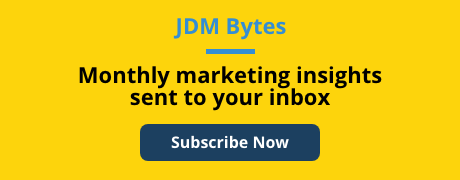Think iOS14 was a big deal for Facebook advertising? If you didn’t have any doubts about how the update affected marketers’ ability to target and measure their ad campaigns, look no further than Facebook’s latest earnings call, which revealed the company’s first EVER year-over-year revenue decline.
If advertisers can’t target effectively, their ROI will plummet. And if they can’t measure the effect of ad campaigns effectively, they won’t know the ROI of their campaigns; and they’re not about to spend more for a less clear outcome. This is a setback for advertisers. But it’s also an opportunity.
Advertisers pulling out of Facebook campaigns are lowering costs for their competitors. If you know how to optimize Facebook data in a post-iOS14 world (and you’re about to learn), you can get aggressive about finding, engaging, and converting new customers and increasing the LTV of your existing customers. This topic is a huge piece of the Facebook advertising puzzle, which we cover in detail in our new whitepaper, How to Succeed with D2C Facebook Advertising (note that much of the material applies to all verticals).
So let’s dig into what data we’ve lost, what options we’ve gained recently to combat the loss, and how to put those options in play.

The iOS14 Fallout
Essentially, iOS14 severely curtailed Facebook’s ability to track user-specific progress in apps or on Safari’s mobile web browser, which meant retargeting audiences based on site or app activity were effectively removed from advertisers’ tool kits. Since Facebook is arguably the most full-funnel single advertising channel, with the power to engage users from awareness to repeat purchases, that loss was dramatic.
In response, Facebook has been forced to develop new, more complicated forms of measurement. We’ll break those down now.
Events Measurement
Facebook quickly pivoted from user-focused tracking to Aggregated Events Measurement tracking, which includes up to eight conversion events (website visits, add to cart events, etc.) that each business must customize to align with their advertising goals.
Events should be prioritized from highest to lowest priority based on which events provide the most value for your business. For example, if you’re an ecommerce business, Purchase would most likely be your top-prioritized event, followed by Add Payment Info, Initiate Checkout, Add to Cart, Viewed Content, etc.
It’s important to note that only the highest-prioritized conversion event taken by a user will be recorded (i.e. if a user makes a purchase, that is the only event that is tracked). You won’t see events tracked for any of the lower-priority conversions like add to cart, etc. For this reason, you must align your events hierarchy for each campaign with your greater business goals for each campaign.
Conversions API (CAPI)
Conversions API (CAPI) was developed by Facebook in response to the iOS14 update to mitigate the loss in data with users opting out of tracking. Instead of relying on the pixel to track conversions, Conversions API provides a direct connection from your website back to Facebook. It’s not necessarily a replacement for the pixel or a “solution” to the loss in tracking, but it does help fill in gaps where the pixel is not able to pass back data.
There are several options to set up CAPI, and Facebook has worked to make implementation simpler so it can be done without the help of a developer. If you use one of Facebook’s partners, like Shopfiy, the setup can be completed in just a few clicks.
The benefits of implementing CAPI are improved measurement, data connectivity, and increased event matching, all leading to potential improvements to cost per acquisition.
You should aim to create CAPI events that mirror each Pixel event that you tracked pre-iOS14.
Once you set up CAPI, it’s important to keep an eye on your Event Match Quality (EMQ) score for each conversion event. Ideally, each event would have a score of at least 6 out of 10. If your EMQ score is on the lower side, Facebook provides recommendations on how to increase the score by implementing additional parameters to pass back through your different events.
For one client, we saw a 26% decrease in CVR the first two weeks after the iOS14 update happened. After the second week, we implemented Conversion API and saw a nearly immediate 21% lift in CVR.
Offline Conversion Tracking
This one isn’t exactly new; it was initially created so that brick-and-mortar stores could tie back in-store purchases to their advertising efforts on Facebook. But since the iOS14 update, the feature has become more crucial and more widely used across all types of businesses. Even companies without a physical location use offline conversion tracking to fill data gaps left by iOS14 by connecting their CRM data with actions taken on Facebook.
When implemented correctly, offline conversion tracking can be very powerful. The data comes straight from your CRM or source of truth and ties right back into Facebook. Since it’s all first-party data and doesn’t rely on a pixel, there should be no data loss. There are tools available that can help simplify setup and even create an automated connection so the data imports back into Facebook automatically without any manual uploads needed. Zapier is one tool that makes the connection process simple if you use a CRM like Salesforce or HubSpot.
Offline conversion tracking does more than help fill in the gaps in reporting that Facebook has lost with users opting out of tracking; it has a couple of other big benefits as well:
- It re-establishes the 28-day attribution window that was lost with the iOS14 update.
- It allows advertisers to view performance breakdowns (age, gender, location, platform, device, etc.) again for conversion events.
As you can see, we’re in a brave new world of Facebook data. Marketers who meet the challenge of adapting have a huge opportunity to thrive. Download our full guide, How to Succeed in D2C Facebook Advertising, to get a comprehensive strategy for Facebook-fueled growth in any vertical.
